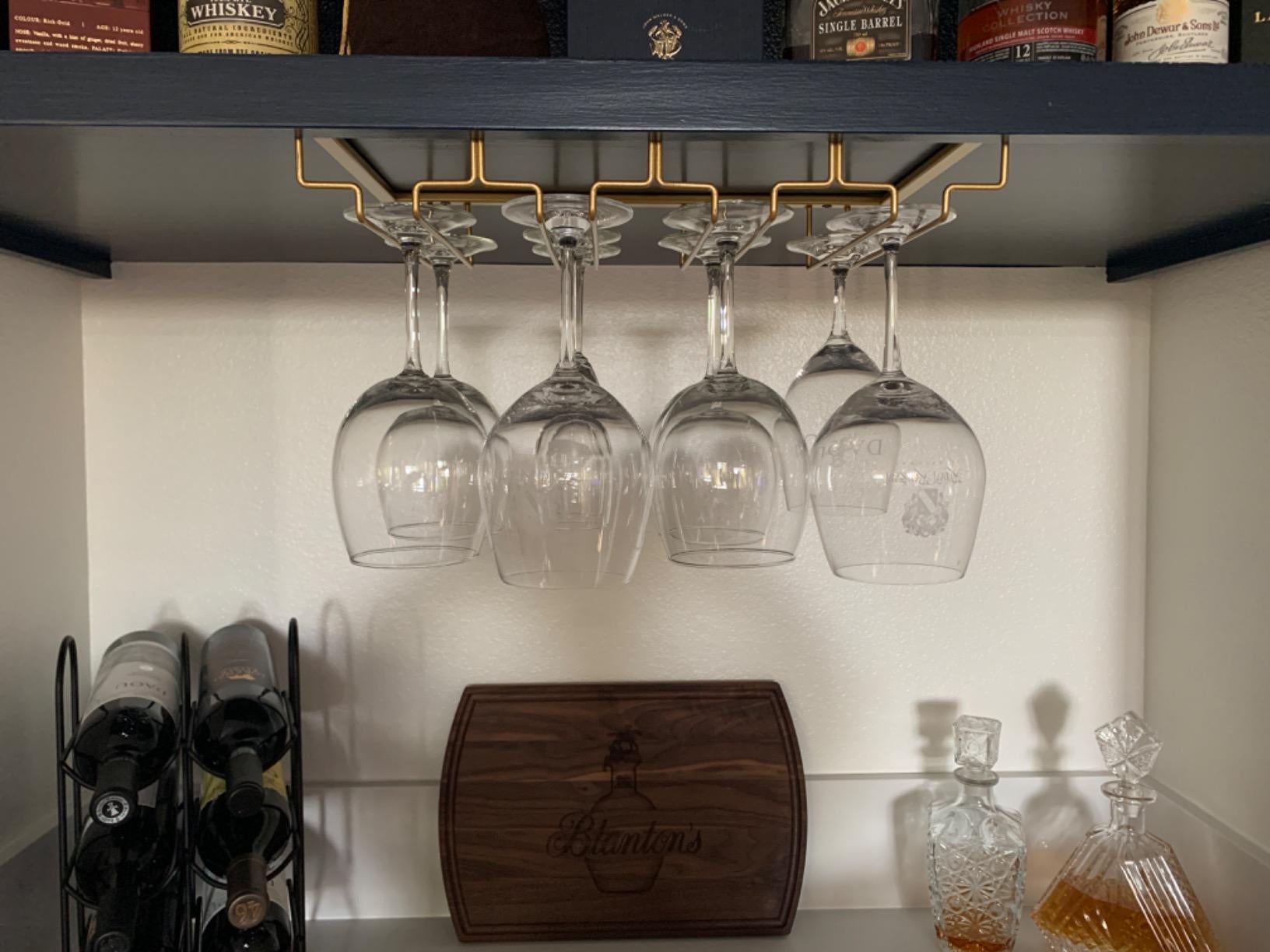

Articles
How To Store Wine Glasses In Cabinet
Modified: September 1, 2024
Learn how to properly store wine glasses in your cabinet with these helpful articles.
(Many of the links in this article redirect to a specific reviewed product. Your purchase of these products through affiliate links helps to generate commission for Storables.com, at no extra cost. Learn more)
Introduction
Wine glasses are not just utilitarian vessels for enjoying your favorite varietals – they are also delicate and fragile items that require proper storage to prevent damage. So, if you have a collection of wine glasses and are wondering how to store them in your cabinet, you’ve come to the right place. In this article, we will cover different methods and considerations for storing wine glasses in a cabinet, ensuring that they remain safe, organized, and easily accessible.
Proper storage not only protects your wine glasses from chipping or breaking but also helps maintain their clarity and shine for years to come. By following these guidelines, you’ll be able to store your wine glasses in a way that maximizes space efficiency and minimizes the risk of damage.
Before diving into the storage methods, it’s important to take a moment to assess the space you have available in your cabinet. Measure the height, width, and depth of the cabinet to determine how many glasses it can accommodate and the best storage configuration. Consider any limitations such as shelves, dividers, or pre-existing storage systems that may affect your choices.
Once you have assessed the space, you can select the right cabinet for your wine glass storage. Look for a cabinet that provides ample space for your collection and has adjustable shelves or compartments that can accommodate glasses of varying sizes and shapes.
Before placing your glasses in the cabinet, it’s crucial to clean and prepare the space. Remove any dust, dirt, or debris from the cabinet and shelves. Additionally, check for any sharp edges or rough surfaces that could potentially damage the glasses and make any necessary repairs or modifications.
Now that you have assessed the space, chosen the right cabinet, and prepared it for storing your wine glasses, it’s time to explore different glass storage methods. The most common methods include storing glasses horizontally, vertically, using glass racks or hanging systems, creating dividers or compartments, and adding protective padding or stemware storage cases. Each method has its own advantages and considerations, so let’s take a closer look at each one.
Key Takeaways:
- Properly assessing the available space, choosing the right cabinet, and implementing suitable glass storage methods are crucial for creating an organized and efficient wine glass storage system in a cabinet.
- Maximizing space efficiency, organizing and labeling wine glass storage, and maintaining the cabinet and glasses are essential for preserving the condition and longevity of your wine glass collection.
Read more: How To Display Wine Glasses In A Cabinet
Assessing the Space
Before you start storing your wine glasses in the cabinet, it’s important to assess the available space. This step will help you determine how many glasses you can store and the best configuration to ensure their safety and accessibility.
Begin by measuring the height, width, and depth of your cabinet. This will give you an idea of the overall capacity and help you determine how many glasses you can fit in the available space. Keep in mind that wine glasses come in different sizes and shapes, so it’s essential to consider the variability when planning your storage solution.
Next, take a look at the shelves or compartments in your cabinet. Determine whether they are adjustable or fixed. Adjustable shelves can be useful as they allow you to customize the height and spacing to accommodate glasses of different sizes. If your cabinet has fixed shelves, consider whether they provide enough space for your glasses or if you need to make any modifications.
Additionally, consider any existing storage systems or dividers in your cabinet. Some cabinets come with built-in wine glass racks or hanging systems. These can be beneficial for storing your glasses, as they provide a secure and organized method. However, if your cabinet lacks these features, don’t worry. There are other storage options that you can explore.
Take note of any limitations in your cabinet that could affect your storage choices. For example, if the shelves are too high or too narrow, you may need to find alternative methods to maximize the space and keep the glasses stable. It’s important to ensure that the glasses are securely stored to prevent them from sliding or tipping over.
By assessing the space in your cabinet and considering these factors, you will have a better understanding of how to proceed with the wine glass storage. It will help you make informed decisions about the storage methods that will work best for your collection and the overall organization of your cabinet. With a clear plan in mind, you can now move forward and choose the most suitable cabinet and storage solutions for your wine glasses.
Choosing the Right Cabinet
When it comes to storing wine glasses in a cabinet, selecting the right cabinet is crucial. The cabinet you choose should not only have enough space to accommodate your wine glasses but also provide the necessary features to keep them safe and easily accessible.
First, consider the size of your wine glass collection, as well as any future additions you may anticipate. This will help you determine the overall storage capacity required. Look for a cabinet with enough shelves or compartments to accommodate your current collection and allow room for growth. It’s better to have a slightly larger cabinet than one that feels cramped and restricts your storage options.
Next, evaluate the structure and design of the cabinet. Look for a sturdy and well-built cabinet that can support the weight of your glasses. Pay attention to the materials used, ensuring they provide adequate strength and durability. Solid wood cabinets are often a popular choice due to their sturdiness and appealing aesthetics.
Consider the configuration of the shelves or compartments in the cabinet. Adjustable shelves are highly desirable, as they allow you to customize the spacing and height to accommodate glasses of different sizes. This versatility can make a significant difference in maximizing the storage capacity and ensuring a secure fit for your wine glasses.
Another important aspect to consider is the accessibility of the glasses. Look for a cabinet that allows you to reach the glasses easily without having to move or shift other items. Sliding or pull-out shelves can be a great feature, as they provide convenient access to the entire collection. If your cabinet doesn’t have these features, ensure that the shelves are easily removable or that you have enough space to maneuver the glasses in and out of the cabinet.
Consider any additional storage features that may be beneficial for organizing your wine glass collection. Some cabinets come with built-in wine glass racks, hanging systems, or dividers. These features can help keep the glasses separate and prevent them from clinking together. If your cabinet doesn’t have these features, don’t worry. There are alternative storage methods that you can explore to maintain the safety of your glasses.
Lastly, take into account the aesthetics of the cabinet. Choose a cabinet that matches your personal style and complements the overall décor of your home. A visually pleasing cabinet can enhance the overall appeal of your wine glass collection and create an attractive display.
By considering these factors and selecting the right cabinet, you can ensure that your wine glasses are stored safely and conveniently. The right cabinet will not only provide adequate space for your collection but also offer the necessary features to protect and showcase your wine glasses with pride.
Cleaning and Preparing the Cabinet
Before you start storing your wine glasses in the cabinet, it’s important to clean and prepare the space to ensure optimal storage conditions. This step will help protect your glasses from dust, dirt, and potential damage, while also maintaining the clarity and shine of the glassware.
Begin by removing any items or debris that may be currently stored in the cabinet. This will provide you with a clear workspace to clean and organize the space effectively. Take the opportunity to declutter and remove any unnecessary items that may be taking up valuable space.
Start by wiping down the interior of the cabinet using a mild cleaning solution or a mixture of water and vinegar. This will help remove any dust or dirt that may have accumulated over time. Use a clean cloth or sponge to gently scrub the shelves, walls, and corners of the cabinet. Pay special attention to any sticky residue or stains, ensuring they are thoroughly cleaned to maintain a hygienic storage environment for your wine glasses.
Inspect the cabinet for any sharp edges, rough surfaces, or loose screws that could potentially damage or scratch your glasses. Smooth out or sand down any rough edges and tighten any loose screws or hardware. This will help create a safe and secure environment for your wine glasses.
Consider adding a liner to the shelves of the cabinet to protect the base of the glasses. A soft, non-slip liner can prevent the glasses from sliding and provides an additional layer of protection against accidental bumps or movements.
After cleaning and preparing the cabinet, it’s also a good idea to let it air out for a while to ensure that any cleaning agents have evaporated. This will prevent any residual odors or chemicals from being transferred to your wine glasses.
Now that the cabinet is clean and ready, it’s time to start considering the various methods of storing your wine glasses. From storing them horizontally or vertically to using glass racks or hanging systems, each method has its own benefits and considerations. The next steps will guide you through these methods, ensuring that you choose the most suitable option for your collection.
Remember, taking the time to clean and prepare your cabinet will set the foundation for safe and organized wine glass storage. Your glasses will not only be protected from potential damage but will also be showcased in a clean and visually appealing manner.
Selecting the Appropriate Glass Storage Method
When it comes to storing wine glasses in a cabinet, there are various methods you can consider. The choice of storage method will depend on factors such as the size and quantity of your wine glass collection, the available cabinet space, and your personal preferences. Let’s explore some of the most common glass storage methods and their considerations.
1. Storing Wine Glasses Horizontally: Storing wine glasses horizontally is a popular method as it allows for maximum use of cabinet space. By laying the glasses on their sides, you can stack multiple glasses on top of each other, utilizing the vertical space efficiently. This method is suitable for cabinets with adjustable or wide shelves. However, it’s important to ensure that the glasses are properly secured and do not slide or bump into each other, which could cause damage.
2. Storing Wine Glasses Vertically: Storing wine glasses vertically is another option, especially if you have tall and narrow cabinets. This method involves standing the glasses upright, with each glass placed individually. It provides easier access to individual glasses without the need to move or disturb other glasses. Vertical storage can be ideal for fragile or delicate wine glasses, as it reduces the risk of them knocking against each other. However, it may require more cabinet space compared to horizontal storage.
3. Using Glass Racks or Hanging Systems: Glass racks or hanging systems are specially designed to hold wine glasses securely and suspend them from the cabinet’s top or sides. These racks come in various styles, including wooden, metal, or plastic designs. They are a space-saving option, as they utilize the vertical space in the cabinet. When using glass racks or hanging systems, ensure that the glasses are securely fastened and there is enough clearance between the glasses to prevent them from touching.
4. Creating Dividers or Compartments: If your cabinet doesn’t have built-in dividers or compartments, you can create your own using materials like felt or foam. These dividers help keep the glasses separate and prevent them from clinking together. By dividing the cabinet into sections, you can organize your wine glasses based on their size, shape, or specific types of glassware.
5. Adding Protective Padding or Stemware Storage Cases: For extra protection, consider adding protective padding or stemware storage cases to your cabinet. These padded inserts or cases provide cushioning and prevent the glasses from knocking against each other, reducing the risk of damage. They are especially useful for fragile or valuable wine glasses.
It’s important to consider your specific needs and the available cabinet space when selecting the appropriate glass storage method. Experiment with different options to find the one that works best for your collection. Don’t forget to regularly assess and reorganize the storage to accommodate any changes in your wine glass collection.
By selecting the appropriate glass storage method, you can ensure that your wine glasses are protected, easily accessible, and showcased in a way that maximizes the available cabinet space.
Read more: How To Store Wine Glasses
Storing Wine Glasses Horizontally
Storing wine glasses horizontally is a popular method that allows for efficient use of cabinet space while keeping the glasses safe and easily accessible. This storage method is especially suitable for cabinets with adjustable or wide shelves. Let’s explore the benefits and considerations of storing wine glasses horizontally.
One of the main advantages of storing wine glasses horizontally is that it allows you to stack multiple glasses on top of each other. By laying the glasses on their sides, you can use the vertical space effectively, maximizing the number of glasses you can store in the cabinet. This is particularly beneficial if you have a large collection or limited cabinet space.
When storing wine glasses horizontally, it’s important to ensure that the glasses are properly secured and do not slide or bump into each other, which could result in damage. Here are some considerations to keep in mind:
1. Glass Size and Shape: Ensure that the glasses are well-suited for horizontal storage. Stemmed wine glasses with a stable base are typically ideal for this method, as they can lay flat without toppling over. Glasses with delicate stems or irregular shapes may require additional padding or support to prevent them from rolling or tipping.
2. Glass Compatibility: Consider the compatibility of the glasses you are storing horizontally. Avoid stacking glasses with different sizes or shapes directly on top of each other, as this can increase the risk of damage. Glasses should fit snugly and not put undue pressure on each other.
3. Padding or Separators: Use soft padding or separators to create a cushion between the glasses. Felt or foam inserts can be placed between each glass to prevent them from clinking together and minimize the risk of chipping or cracking.
4. Stable Shelving: Ensure that the shelves in your cabinet are stable and provide adequate support for the weight of the glasses. Adjustable shelves can be helpful in accommodating glasses of different heights and sizes. Check that the shelves are level and secure to avoid any accidents or unexpected movement.
5. Accessibility: Consider how easily you can access the glasses when storing them horizontally. Arrange the glasses in a way that allows you to remove individual glasses without disturbing the rest. This can be achieved by creating rows or sections within the cabinet and ensuring sufficient spacing between glasses.
Storing wine glasses horizontally also has the benefit of showcasing the glasses’ elegant stems and shape. It allows you to visually appreciate your collection and make a statement in your cabinet.
Remember to periodically inspect the glasses for any signs of damage or deterioration. If you notice any cracks, chips, or weakening of the glass, it’s essential to replace or repair the affected glasses promptly.
By following these considerations, you can store your wine glasses horizontally in a way that maximizes the available cabinet space, maintains their safety, and showcases their beauty. This storage method is a practical solution for efficiently organizing and protecting your wine glass collection.
Storing Wine Glasses Vertically
Storing wine glasses vertically is a practical option that allows for easy access and efficient use of cabinet space. This storage method involves standing the glasses upright individually, rather than stacking them horizontally. Let’s explore the benefits and considerations of storing wine glasses vertically.
One of the primary advantages of storing wine glasses vertically is the convenience of accessing individual glasses without moving or disturbing the others. When glasses are stored in a vertical position, you can simply reach in and easily grab the glass you need, without having to rearrange the entire set. This makes it ideal for frequent use and for those who want quick and convenient access to their wine glasses.
When storing wine glasses vertically, it’s essential to consider the following factors to ensure their safety and prevent any potential damage:
1. Cabinet Height: Verify that the cabinet has sufficient height to accommodate the glasses in an upright position. Measure the height of your glasses and ensure that the shelves or compartments in the cabinet allow enough clearance to comfortably store them without any risk of hitting the top of the cabinet.
2. Glass Stability: Check that your wine glasses have a stable base that allows them to stand upright without toppling over. Glasses with a wider or weighted base are generally more suitable for vertical storage. Avoid storing glasses with delicate stems or those that are prone to tipping or falling.
3. Spacing between Glasses: Provide enough space between the glasses to prevent any contact or clinking that could cause damage. The glasses should not be tightly packed together, as this could result in chips or scratches. Ideally, leave at least an inch of space between each glass to ensure they remain separate and secure.
4. Additional Protection: Consider using soft padding or separators to provide an extra layer of protection and minimize the risk of glasses bumping into each other. Felt or foam inserts can be placed between each glass to create a cushioning effect. These inserts can help absorb any impact or movements, reducing the risk of damage.
5. Accessibility: Arrange the glasses in a way that allows for easy access and visibility. Consider organizing them by type, size, or frequency of use. This will help you quickly locate the specific glass you need without any hassle. Labeling the shelves or using dividers can also contribute to better organization and accessibility.
Storing wine glasses vertically not only optimizes the use of cabinet space but also allows you to showcase the elegant design of the glasses. The glasses will be prominently displayed, making them a part of your cabinet’s décor.
Remember to periodically check the glasses for any signs of wear or damage. Inspect the stems and rims for cracks, chips, or any weakening. Promptly replace or repair any glasses that show signs of deterioration to prevent further damage or accidents.
By considering these factors and following these guidelines, you can safely store your wine glasses vertically, ensuring easy access, optimal use of cabinet space, and the preservation of their condition. This storage method offers a practical and attractive solution for organizing your wine glass collection.
When storing wine glasses in a cabinet, it’s best to hang them upside down to prevent dust from collecting inside. Use a stemware rack or install hooks to keep them safely suspended.
Using Glass Racks or Hanging Systems
Using glass racks or hanging systems is an efficient and space-saving method for storing wine glasses in a cabinet. These specialized storage solutions suspend the glasses from the top or sides of the cabinet, allowing for easy access and organized display. Let’s explore the benefits and considerations of using glass racks or hanging systems.
One of the main advantages of using glass racks or hanging systems is that they make use of the vertical space in the cabinet, freeing up valuable shelf space for other items. By hanging the glasses, you can maximize the storage capacity in the cabinet and efficiently utilize every inch.
Glass racks or hanging systems come in various designs and materials, such as wooden, metal, or plastic. They feature hooks or slots that securely hold the stems of the glasses, while leaving the bowls suspended in mid-air. This method can be especially useful for stemmed wine glasses, as it allows them to hang freely without the risk of tipping over.
When using glass racks or hanging systems, it’s important to consider the following factors:
1. Cabinet Structure: Ensure that your cabinet is capable of supporting the weight of the glasses and the rack or hanging system. Check that the cabinet walls or top are sturdy enough to withstand the load and won’t flex or bend under the weight. If needed, reinforce the cabinet using additional supports or brackets.
2. Compatibility: Verify that the glass rack or hanging system is compatible with your specific wine glasses. Different racks have varying capacities and dimensions, so it’s crucial to select one that accommodates the size and shape of your glasses. Consider the number of glasses each rack or system can hold and choose accordingly.
3. Placement: Decide on the most suitable location for the glass rack or hanging system in the cabinet. The top of the cabinet is a popular choice, as it allows for easy access and does not interfere with other items. However, side-mounted systems can be an alternative if the top space is limited or if you prefer a different aesthetic.
4. Securing the Glasses: Make sure the glasses are securely fastened and that they won’t slip or dislodge from the rack or hanging system. Ensure that the stems fit snugly into the hooks or slots and that there is enough clearance between glasses to prevent them from touching or clinking together. Periodically check the fastenings to ensure everything remains secure.
5. Accessibility: Consider how easily you can access the glasses when using a rack or hanging system. Optimize the organization by arranging the glasses in a logical order, such as by glass type or size, to make it easy to locate the desired glass without any hassle.
Using glass racks or hanging systems not only saves space but also provides an appealing display for your wine glasses. The suspended glasses create an elegant and visually pleasing focal point in the cabinet.
Remember to periodically inspect the glasses and the rack or hanging system for any signs of wear or damage. Ensure that the glasses are clean and free from any dust or debris that may accumulate over time.
By considering these factors and utilizing glass racks or hanging systems, you can efficiently store your wine glasses, optimize cabinet space, and add a touch of sophistication to your cabinet’s organization.
Creating Dividers or Compartments
Creating dividers or compartments in your cabinet is an effective way to organize and store wine glasses. By dividing the available space, you can keep glasses separate and prevent them from clinking together, reducing the risk of damage. Let’s explore the benefits and considerations of creating dividers or compartments for your wine glass storage.
One of the main advantages of creating dividers or compartments is that it helps maintain the stability and integrity of the wine glasses. When glasses are placed in separate sections, they are less likely to knock into each other, minimizing the risk of chips, cracks, or scratches. This storage method is especially useful for delicate or fragile wine glasses that require extra care.
To create dividers or compartments in your cabinet, consider the following factors:
1. Size and Shape: Assess the size and shape of your wine glasses to determine the dimensions of each compartment. Measure the height and width of the glasses, and design the dividers accordingly. Customize the compartments to fit your specific glassware to ensure a snug fit.
2. Materials: Choose suitable materials for creating the dividers. Felt, foam, or even wooden panels can be used to build physical barriers between the glasses. Ensure that the materials are sturdy enough to hold the weight of the glasses and provide adequate protection.
3. Spacing: Provide enough space between the dividers to allow for easy insertion and removal of the glasses. The spacing should be sufficient to prevent the glasses from rubbing against each other. A minimum distance of one inch between each compartment is generally recommended.
4. Securing the Dividers: Ensure that the dividers are securely attached to the cabinet or the shelves to prevent them from shifting or collapsing. Use screws, brackets, or adhesive materials to firmly fix the dividers in place. This will ensure that the glasses remain stable and the compartments function properly.
5. Adjustability: Consider incorporating adjustable dividers or modular systems that allow for flexibility. This can be beneficial if you have a variety of glass sizes or if your collection evolves over time. With adjustable dividers, you can easily modify the compartments to accommodate the changing needs of your wine glass collection.
Creating dividers or compartments in your cabinet not only helps protect and organize your wine glasses, but it also provides a visually appealing and well-arranged display. You can easily distinguish and retrieve specific glasses without having to sift through a jumble of stemware.
Periodically check the dividers and compartments for stability and any signs of wear. Be mindful of any changes in your collection and adjust the dividers as needed to accommodate new additions or changes in glassware.
By considering these factors and creating dividers or compartments in your cabinet, you can effectively organize and store your wine glasses, ensuring they remain safe and easily accessible.
Read more: How To Store Glasses In Cabinet
Adding Protective Padding or Stemware Storage Cases
To provide an extra layer of protection for your wine glasses, consider adding protective padding or using stemware storage cases. These measures can help cushion the glasses and minimize the risk of damage during storage. Let’s explore the benefits and considerations of adding protective padding or stemware storage cases.
One of the main advantages of using protective padding or stemware storage cases is the enhanced protection they offer. These measures help prevent glasses from clinking together, reducing the risk of chipping, cracking, or scratching. By adding padding or using storage cases, you can ensure that your wine glasses stay in optimal condition while stored in the cabinet.
Here are some considerations to keep in mind when adding protective padding or using stemware storage cases:
1. Material Selection: Choose a padding material that provides sufficient cushioning for the glasses. Soft materials like felt or foam inserts are commonly used and offer good protection against impact. Ensure that the padding material is gentle on the glass surface to avoid scratching or damaging the glasses.
2. Placement: Position the padding or storage cases where they come into direct contact with the glasses. Attach the padding to the cabinet shelves or compartments directly beneath each glass. If using storage cases, place one glass in each case, ensuring a snug fit that prevents movement during storage.
3. Customization: Tailor the padding or storage cases to fit the specific size and shape of your wine glasses. Measure the dimensions of your glasses and cut the padding or select storage cases that accommodate those measurements. Customization ensures a secure and well-fitting protective layer.
4. Compatibility: Ensure that the padding or storage cases do not interfere with the stability of the glasses. They should not obstruct the base or stem of the glasses, impeding their balance or ability to stand upright. Choose padding or storage cases that allow the glasses to maintain their natural alignment.
5. Accessibility: Consider how easily you can access the glasses and remove them from the protective padding or storage cases when needed. The padding or storage cases should not create any hinderance or delay in retrieving the glasses for use. Strive for a balance between protection and accessibility.
Adding protective padding or using stemware storage cases not only safeguards your wine glasses but can also contribute to a more organized and aesthetically pleasing cabinet display. The padding can be color-coordinated or customized to match the interior of your cabinet, enhancing the overall presentation.
Be sure to periodically check and clean the padding or storage cases to remove any dust, debris, or stains that may accumulate over time. This will help maintain the cleanliness and effectiveness of the protective measures.
By considering these factors and implementing protective padding or stemware storage cases, you can significantly reduce the risk of damage to your wine glasses while they are stored in the cabinet. Your glasses will remain safe, protected, and ready for your next celebratory toast.
Maximizing Space Efficiency
When storing wine glasses in a cabinet, maximizing space efficiency is essential to make the most of the available storage area. By utilizing clever techniques and strategies, you can optimize the layout of your cabinet and accommodate more glasses. Let’s explore some tips for maximizing space efficiency in your wine glass storage.
1. Assess Your Collection: Begin by evaluating your wine glass collection. Take stock of the number of glasses you have and consider any future additions you may anticipate. This will help you determine the storage capacity required and plan accordingly.
2. Purge Unnecessary Glassware: Declutter your collection by removing any wine glasses that you no longer use or that are damaged beyond repair. This will free up valuable space in your cabinet for the glasses you regularly use and help maintain an organized storage system.
3. Utilize Adjustable Shelves: If your cabinet has adjustable shelves, take advantage of them. Adjust the height of the shelves to accommodate glasses of varying sizes and shapes. This flexibility allows you to optimize the use of vertical space and eliminates wasted empty space between shelves.
4. Stack Glasses Neatly: When storing glasses horizontally, stack them neatly to maximize the number of glasses you can fit in a single row. Ensure that the glasses are stable and do not put excessive pressure on each other, as this could lead to damage.
5. Use Every Nook and Cranny: Don’t overlook any available space within the cabinet. Make use of the top of the cabinet, the back wall, or the doors for additional storage. Install hooks, shelves, or hanging systems to hang glasses or hang stemware storage cases to efficiently utilize these spaces.
6. Optimize Vertical Storage: If your cabinet has enough height, consider storing glasses vertically. This technique takes advantage of unused vertical space and allows for easy access to individual glasses without disturbing the others. Be sure to leave enough clearance between glasses to prevent any contact or potential damage.
7. Customized Storage Solutions: Get creative with custom storage solutions. Build or purchase specialized wine glass racks, dividers, or compartments that are designed to fit your specific cabinet dimensions and align with the shape and size of your glasses. This ensures a snug fit and optimum space utilization.
8. Group Glasses by Type or Size: Grouping glasses by type or size can help optimize the organization and make the best use of the available space. Arrange glasses with similar characteristics together to create logical groupings that are easy to navigate. Labeling or categorizing the shelves can further enhance the efficiency of the storage system.
9. Consider Stemware Storage Cases: Stemware storage cases are a great option if you have limited cabinet space or need to safely store delicate or valuable wine glasses. These cases provide individual compartments for each glass, protecting them from potential damage. They can also be stacked to save space.
10. Regularly Reassess and Reorganize: Periodically evaluate your collection and storage system to ensure it’s still meeting your needs. As your collection grows or changes, make necessary adjustments to accommodate new glasses and maximize space efficiency.
By implementing these space-saving strategies, you can make the most of your cabinet storage and ensure efficient use of space while maintaining the safety and accessibility of your wine glasses.
Organizing and Labeling Wine Glass Storage
Organizing and labeling your wine glass storage is key to maintaining a well-structured and easily accessible cabinet. By implementing effective organization techniques and utilizing labeling systems, you can quickly locate the specific glass you need and ensure a streamlined storage experience. Let’s explore some tips for organizing and labeling your wine glass storage.
1. Group by Glass Type or Size: Arrange your wine glasses by type or size to create clear groupings within your cabinet. This makes it easier to distinguish between different glasses and locate them quickly when needed. You can separate red wine glasses from white wine glasses, or group glasses by their capacity or shape.
2. Utilize Dividers or Compartments: If your cabinet does not have built-in dividers or compartments, consider creating your own using materials like foam, felt, or wood. These dividers keep glasses separate and prevent them from clinking together, reducing the risk of damage. Custom-made dividers can be designed to fit your specific glass sizes and shapes.
3. Label Shelves or Sections: Labeling the shelves or sections in your cabinet can significantly enhance organization and quickly guide you to the desired glass. Use adhesive labels or sticky notes to mark each section with the type of glass stored there, such as “Red Wine Glasses,” “Champagne Flutes,” or “Whiskey Tumblers.” This allows for easy visual identification.
4. Implement a Color-Coding System: Consider implementing a color-coding system to further enhance organization and ease of access. Assign specific colors to different types of glasses or to different sections of the cabinet. For example, use blue labels for white wine glasses and green labels for red wine glasses. This visual cue helps to quickly identify the desired glass.
5. Arrange Glasses by Frequency of Use: Organize your glasses based on their frequency of use. Place the glasses you use most often within easy reach and at eye level for convenient access. Reserve the higher or lower shelves for glasses used less frequently or for special occasions. This arrangement ensures that your most-used glasses are readily accessible and always at hand.
6. Use Clear Storage Containers: Clear storage containers or bins can be employed to group and streamline the organization of your wine glasses. Placing glasses in labeled containers helps keep them together and ensures that each set stays intact. Transparent containers also allow for easy identification of the glasses without the need to remove them individually.
7. Maintain Consistency and Neatness: Regularly tidy and maintain your wine glass storage to ensure a neat and organized appearance. Return glasses to their designated sections after use to maintain the designated organization. By being consistent and disciplined, you can maximize the efficiency of your storage system.
8. Reassess and Modify as Needed: Periodically review and modify your organization and labeling system based on your evolving needs and any changes in your wine glass collection. As you acquire new glasses or adjust your preferences, be prepared to rearrange and relabel your storage to accommodate these changes.
By implementing these organizing and labeling strategies, you can create a well-structured and easily navigable wine glass storage system. Whether you’re hosting a gathering or enjoying a quiet evening at home, you’ll be able to locate and retrieve the perfect glass for any occasion with minimal effort.
Maintaining the Cabinet and Glasses
To ensure the longevity of your wine glasses and the functionality of your cabinet, proper maintenance is essential. By caring for both the cabinet and glasses, you can preserve their condition, prevent damage, and extend their lifespan. Let’s explore some tips for maintaining the cabinet and glasses in your wine glass storage system.
1. Regular Cleaning: Regularly clean both the cabinet and the wine glasses to remove dust, dirt, and any potential residue. Use a soft cloth or a gentle cleaning solution to wipe down the surfaces of the cabinet, including the shelves, walls, and the interior. For the wine glasses, wash them by hand using mild dish soap, rinse thoroughly, and dry them with a lint-free cloth.
2. Avoid Extreme Temperatures: Protect your wine glasses and cabinet from extreme temperatures as they can cause damage. Avoid exposing the glasses to sudden temperature changes or leaving them in extremely hot or cold environments. This precaution reduces the risk of thermal shock and helps maintain the structural integrity of the glasses.
3. Handle with Care: When handling the wine glasses, be gentle and cautious to avoid accidental drops or collisions that could cause breakage. Always hold the glasses by the stem to prevent fingerprints or smudges on the bowls. Avoid using excessive force when inserting or removing glasses from the cabinet to prevent any unnecessary stress on the glassware.
4. Inspect for Damage: Periodically inspect your wine glasses for any signs of damage, such as chips, cracks, or weakened stems. Set aside any glasses that show signs of damage and either repair or replace them accordingly. Regular inspections can help identify and address any issues before they worsen.
5. Use Proper Storage Methods: Utilize the appropriate storage methods discussed earlier in this article, such as horizontal or vertical storage, glass racks, or dividers. Following the recommended storage methods helps prevent glasses from accidentally bumping into one another or shifting within the cabinet.
6. Preventative Measures: Consider using protective accessories, such as stemware storage cases or padded inserts, to safeguard your wine glasses from potential damage. These additional layers of protection can minimize the risk of scratches, chips, or cracks during storage and transportation.
7. Avoid Overcrowding: Be mindful not to overcrowd your wine glasses in the cabinet. Giving each glass sufficient space helps prevent them from touching or grinding against each other, reducing the likelihood of damage. Allow for proper airflow and circulation within the cabinet to keep the glasses in a controlled environment.
8. Routine Cabinet Maintenance: Regularly inspect the cabinet for any signs of wear, loose screws, or damaged shelves. Make any necessary repairs or adjustments promptly to maintain the stability and structural integrity of the cabinet. This proactive approach ensures that your wine glass storage system remains safe and secure.
9. Maintain a Clean Environment: Keep the area surrounding the cabinet clean and free from excessive dust or debris. Regularly dust the surrounding surfaces to prevent any particles from settling on the glasses or entering the cabinet. This practice helps maintain a clean and hygienic storage environment.
10. Store the Glasses for Optimal Results: When not in use, store your wine glasses upright or within their designated storage method to prevent dust or debris from settling inside the bowls. This practice also promotes proper airflow and prevents the glasses from collecting moisture or odors.
By implementing these maintenance tips, you can ensure that both your cabinet and wine glasses remain in excellent condition. With proper care, your wine glass storage system will provide a safe and organized space for your collection, allowing you to enjoy your favorite wines in style for years to come.
Read more: How To Store Stemless Wine Glasses
Conclusion
Storing wine glasses in a cabinet requires careful consideration to ensure their safety, accessibility, and longevity. By following the methods and tips discussed in this article, you can create an organized and efficient wine glass storage system that protects your glasses and enhances your overall wine experience.
Assessing the available space in your cabinet and choosing the right cabinet are crucial first steps. Consider the size of your wine glass collection and the features of the cabinet that will best accommodate your needs. Cleaning and preparing the cabinet ensure that it provides a clean and suitable environment for storing your glasses.
Next, select the appropriate glass storage method. Whether you choose to store your glasses horizontally, vertically, use glass racks or hanging systems, create dividers or compartments, or add protective padding or stemware storage cases, each method has its advantages and considerations. Evaluate your collection and the available space to determine the most suitable storage method for your wine glasses.
Maximizing space efficiency is key to making the most of your cabinet storage. Utilize adjustable shelves, stack glasses neatly, and consider customized storage solutions to optimize the available space. Grouping glasses by type or size, utilizing dividers or compartments, and implementing labeling systems allow for easy organization, quick identification, and convenient access to your wine glasses.
Proper maintenance is essential for both the cabinet and the glasses. Regular cleaning, handling with care, and periodic inspections prevent damage and ensure the longevity of your glassware. Utilizing protective measures such as padding or stemware storage cases adds an extra layer of protection and preserves the condition of your glasses.
In conclusion, by implementing the strategies discussed in this article, you can create a storage system that not only protects and organizes your wine glasses but also enhances your overall wine enjoyment. With a carefully thought-out and well-maintained cabinet, you can conveniently access your glasses, showcase your collection, and savor your favorite wines in style.
Frequently Asked Questions about How To Store Wine Glasses In Cabinet
Was this page helpful?
At Storables.com, we guarantee accurate and reliable information. Our content, validated by Expert Board Contributors, is crafted following stringent Editorial Policies. We're committed to providing you with well-researched, expert-backed insights for all your informational needs.
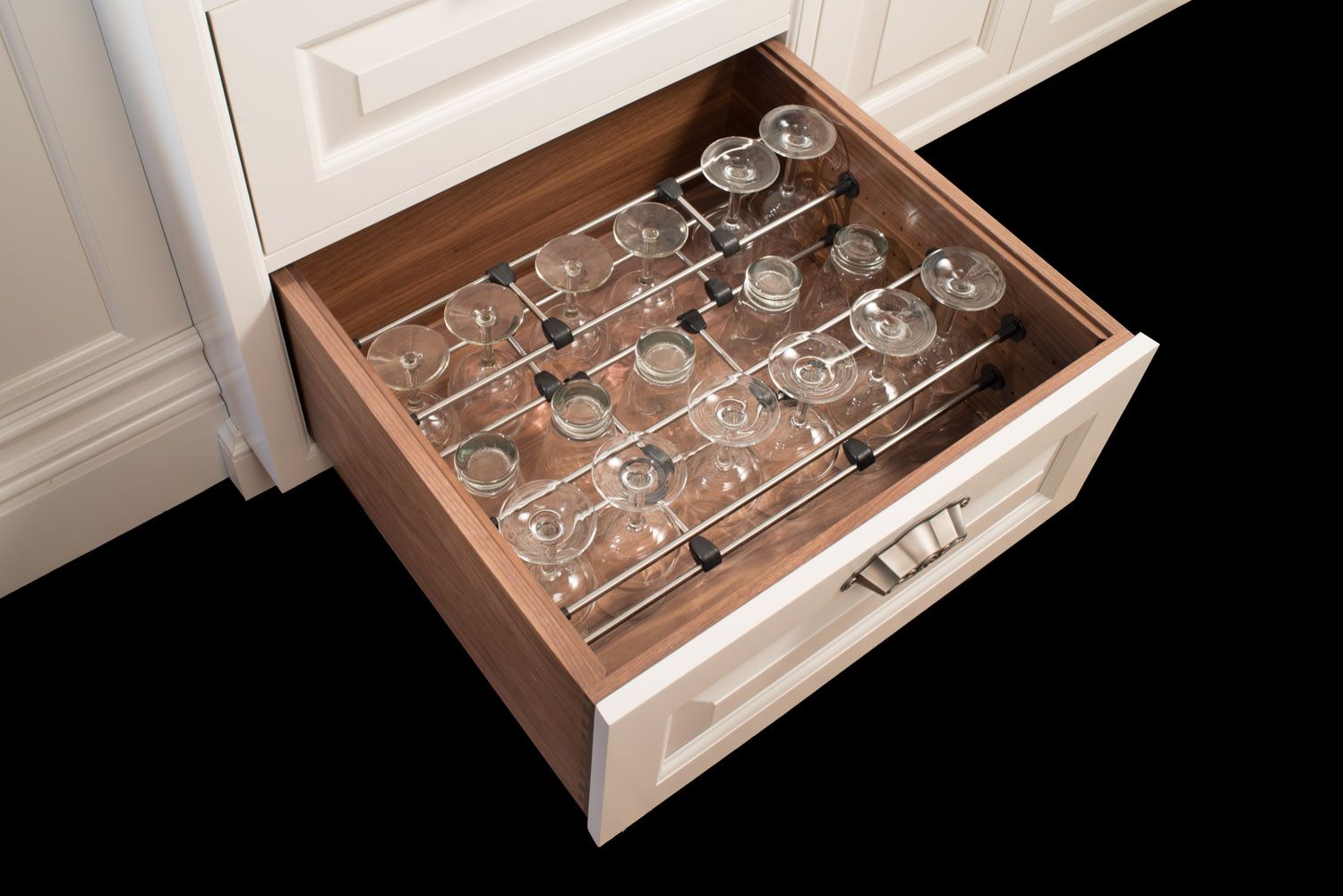
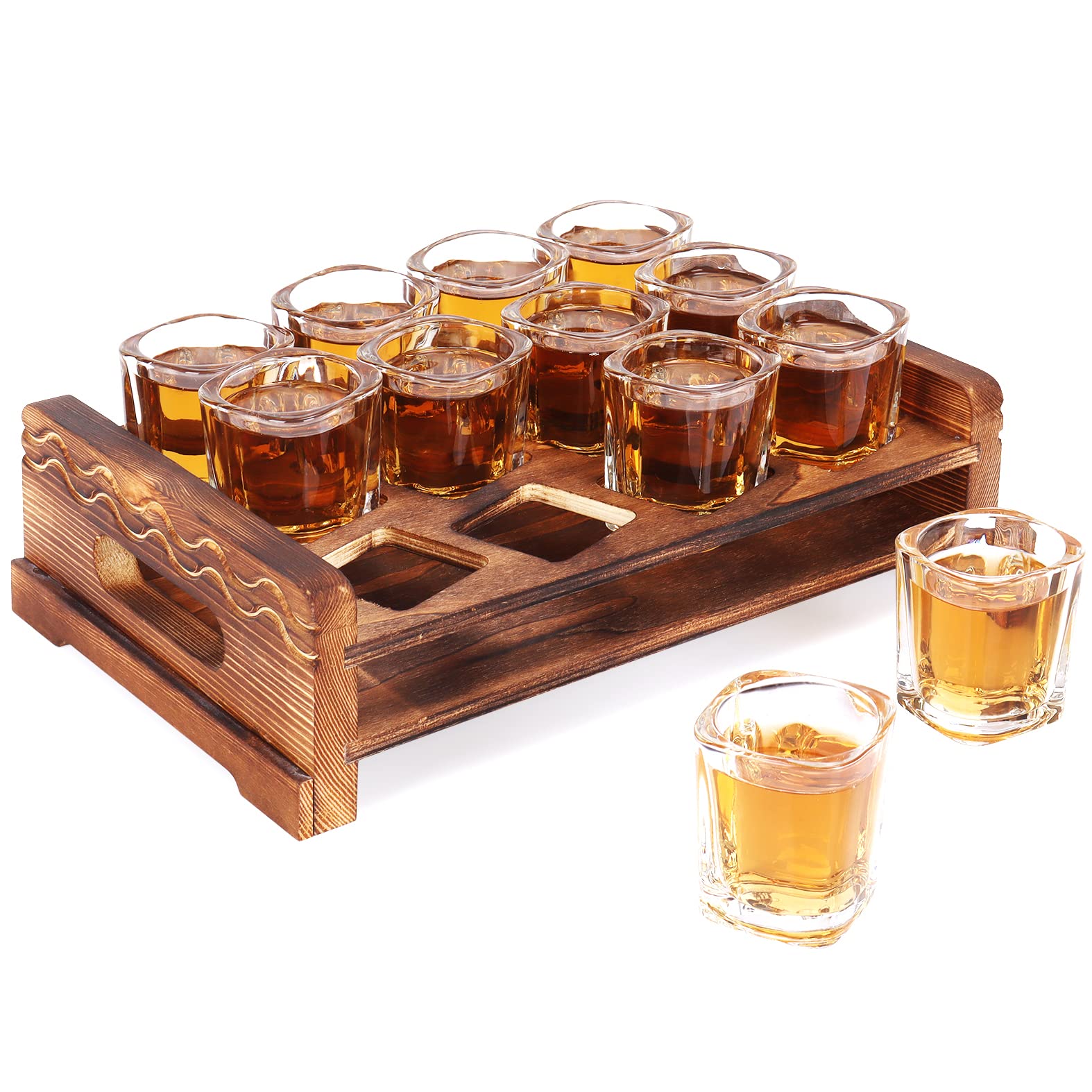
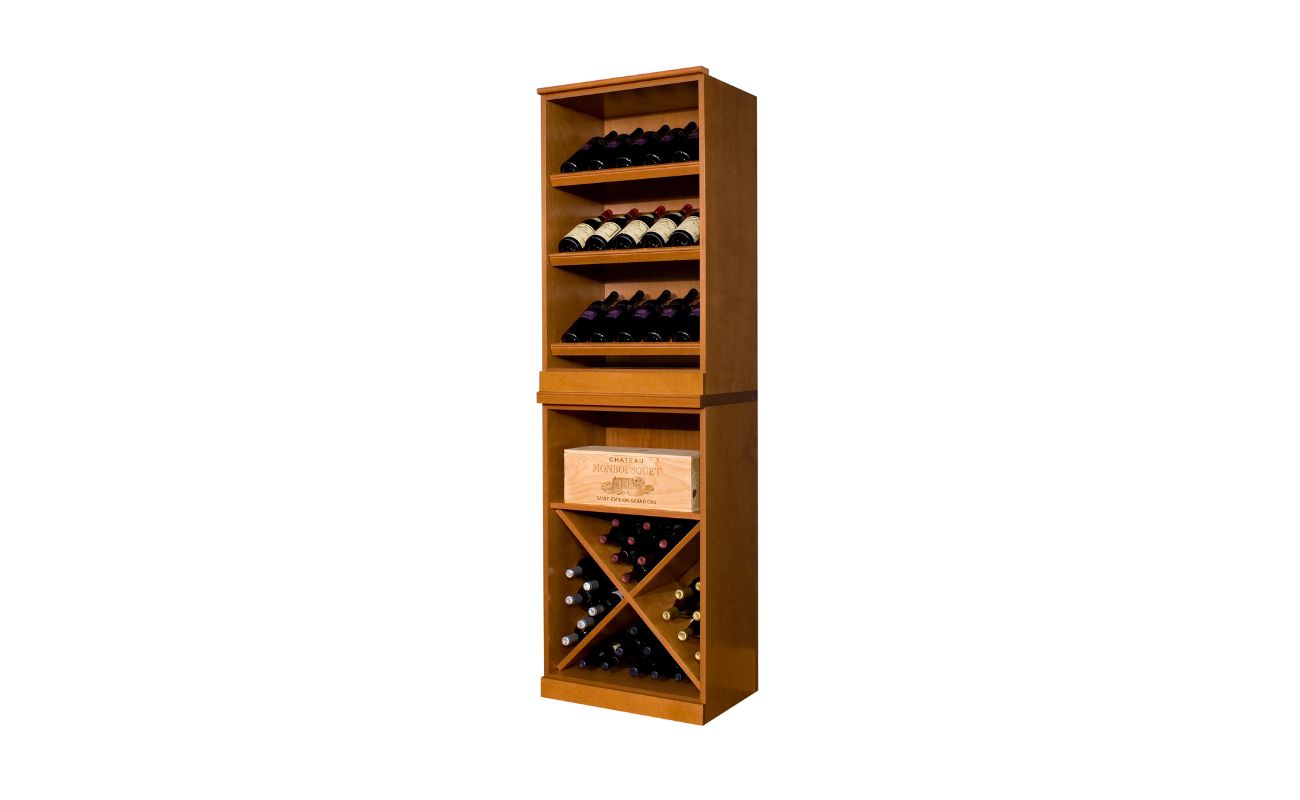
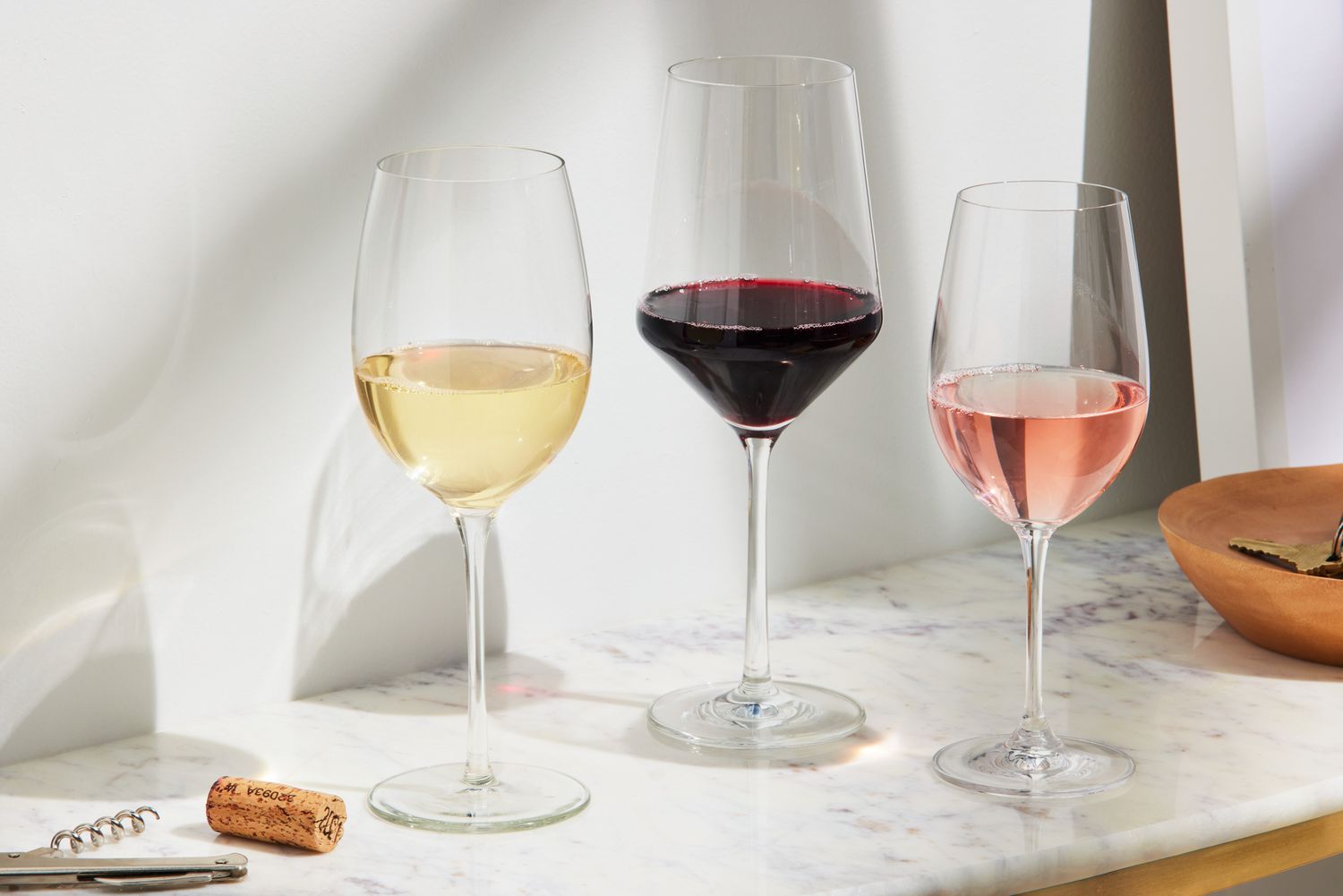


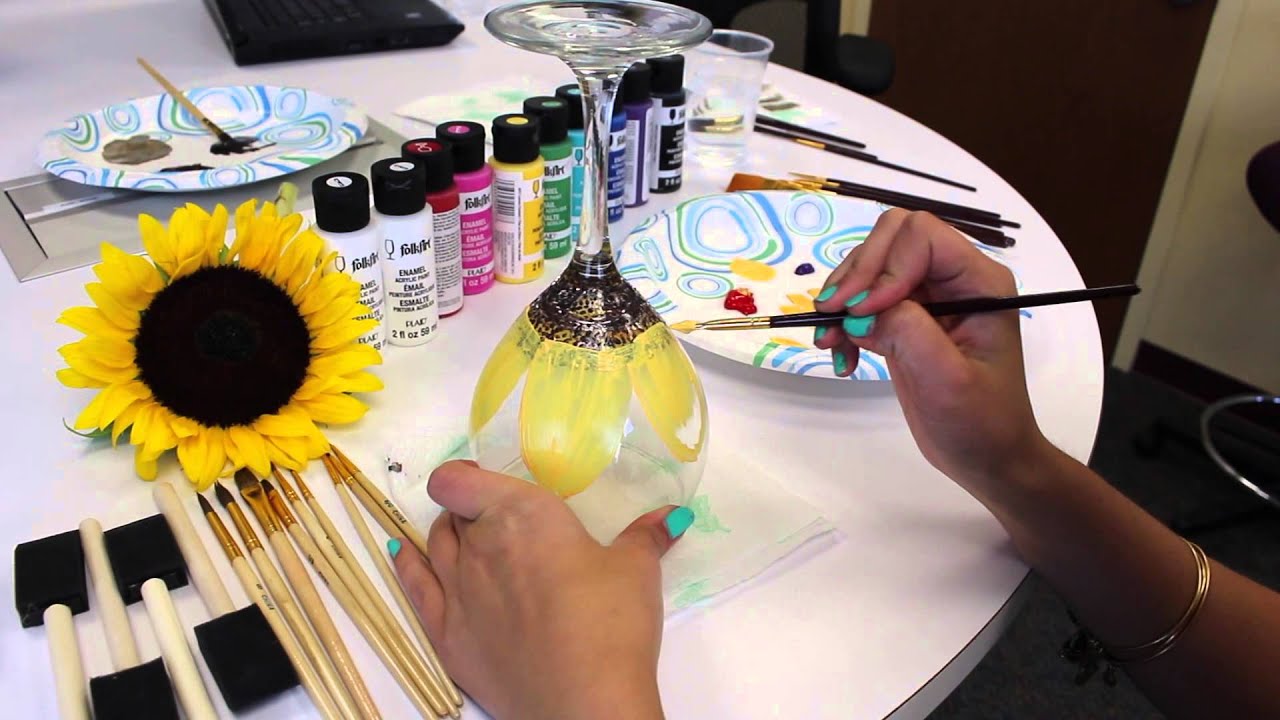


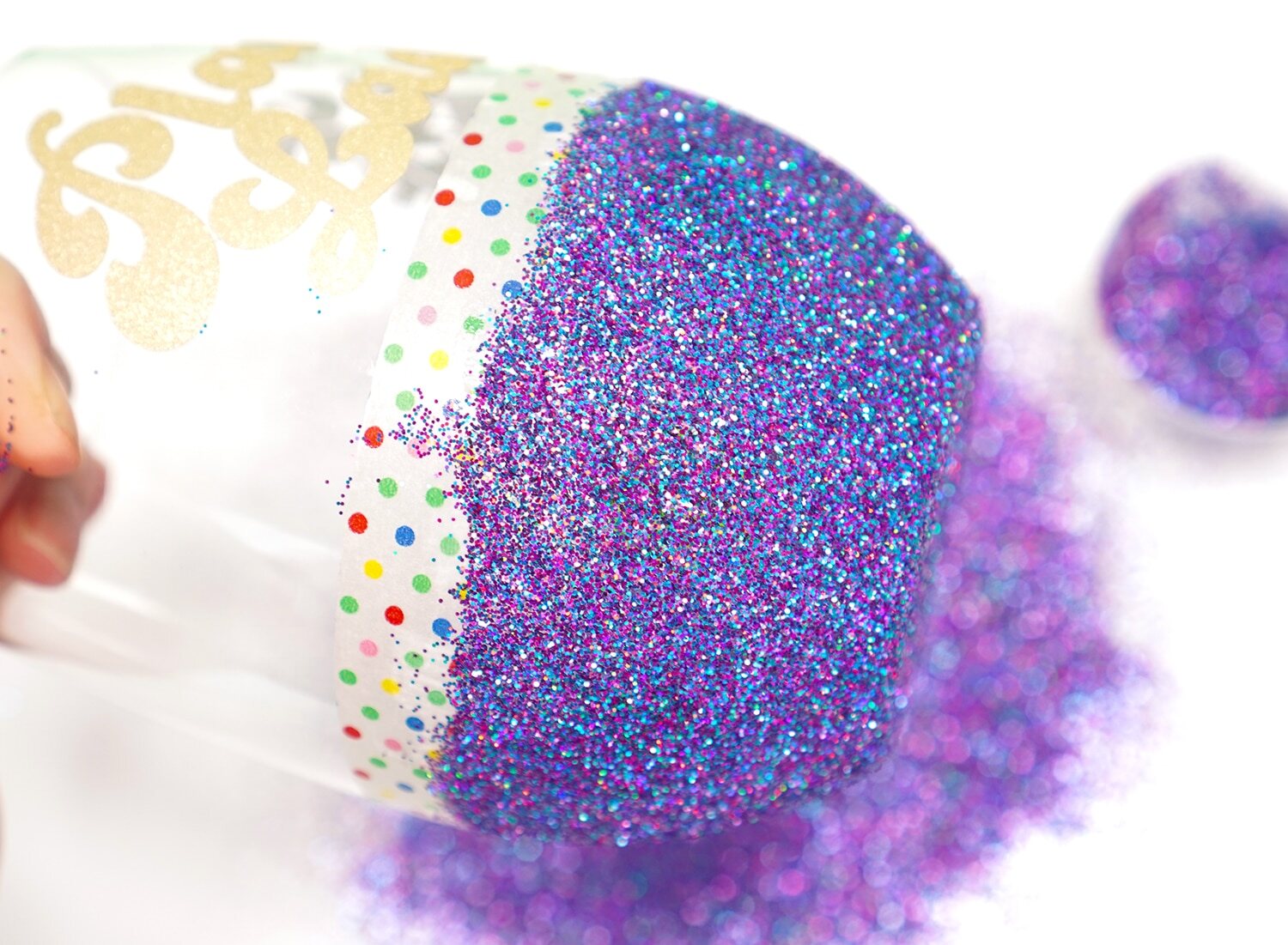
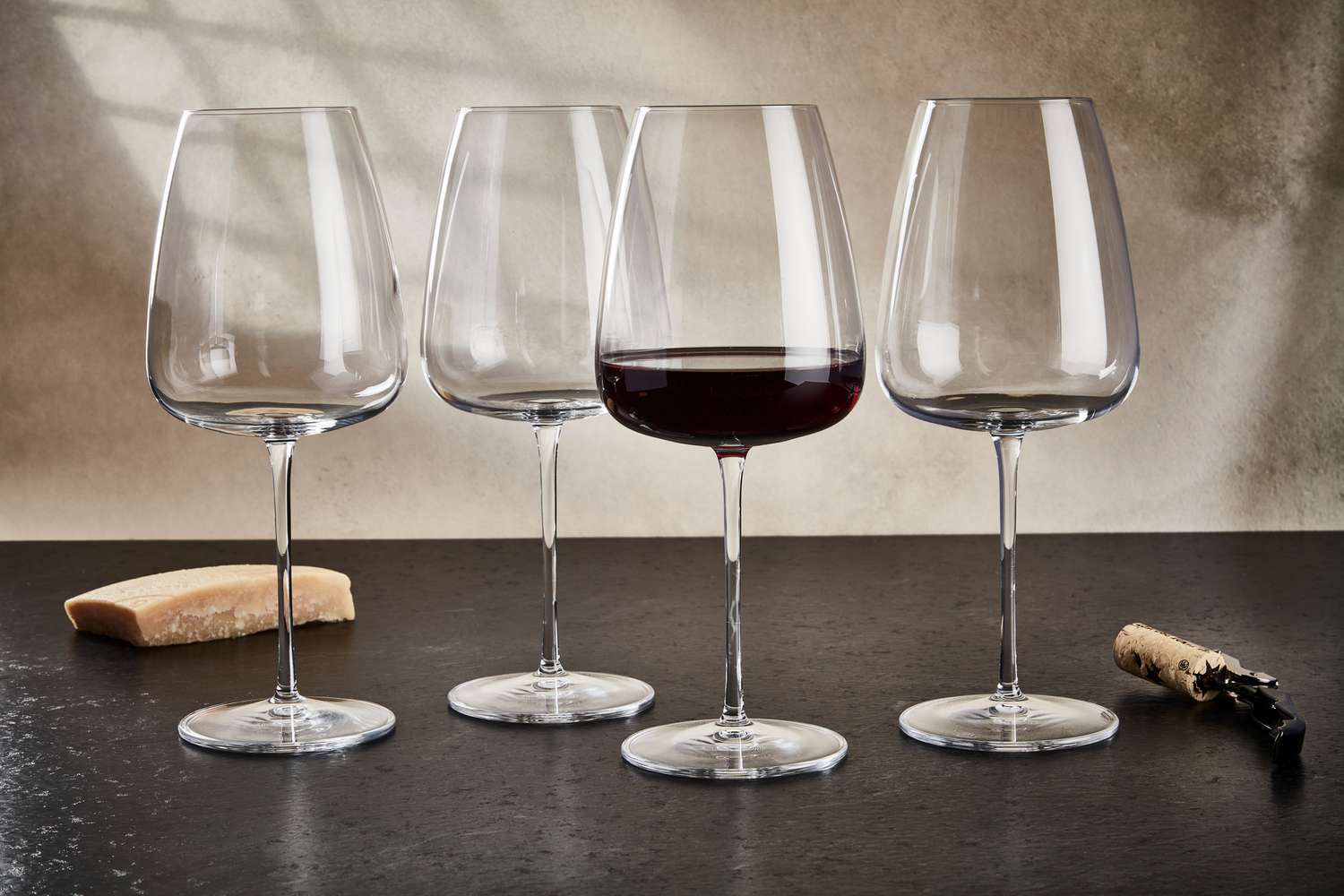


0 thoughts on “How To Store Wine Glasses In Cabinet”